 Your new post is loading...
 Your new post is loading...
Nearly half of millennials (43 percent) have been misled by medical information on the internet. A recent Harris Poll found that people tend to click the first article that comes up in a search, even though such articles are often advertising content aimed at selling medicine or medical devices. When people aren't searching, they are often coming across such misleading content via social media. Of the 20 most-shared articles about cancer on Facebook last year, over half, according to The Independent, contained claims discredited by doctors and health authorities. How does this misinformation make its way into widely circulated articles? Often, it is there on purpose: Content marketing -- corporate advertising disguised as articles, videos and information -- is being systematically manufactured on an industrial scale....
TOne talk that interested me regarded native advertising because - in my opinion - native has the potential to deceive audiences more than it provides value. I say this because in a recent study by Grady College, "only 17 out of 242 subjects -- under 8% -- were able to identify native advertising as a paid marketing message." This is a huge problem in the era we live in with trust in the media being at an all-time low. I wanted to know where we are, where we're going and how will things shake out on the way - I asked the native advertising panellists for a view on where we are going.
Therefore, content creators and advertisers may find themselves scratching their heads about how to break through the clutter with compelling branded content that attracts an audience and makes them want more. “While there’s no ‘one size fits all’ when it comes to creating impactful branded content, we’ve identified some common themes in our research and content testing that can be used as best practices for making content resonate with audiences,” said Harry Brisson, Director of Lab Research at Nielsen. To better understand how consumers are reacting to this new form of marketing content, Nielsen assessed consumer reactions to more than 100 pieces of branded content and found that a brand’s effectiveness (e.g., how a brand resonates with viewers) is largely affected by the format and environment the message is delivered in. The results of the analysis uncovered three key takeaways that can help brands deliver strong content that resonates with and builds audiences: - Branded content can drive higher brand recall and brand lift than pre-roll - When viewers enjoy content, they view the integrated brands more favorably - Partnering with a publisher can drive ad impact....
Therein lies the problem: native advertising is more effective because it masquerades as actual content. But it’s illegal to pass advertising messages off as editorial content. The Advertising Standards Authority in the United Kingdom, for instance, banned a native YouTube ad sponsored by Oreo that featured two well known video bloggers because the agency felt it was not clearly identified as marketing communication.
Stateside, the Federal Trade Commission (“FTC”) has long waged war on false advertising—marketing or advertising communications that tend to mislead consumers. Recently, the FTC issued an “enforcement policy statement on deceptively formatted advertisements” giving advertisers and publishers alike a heads up: deceptive native ads will not be tolerated.
So how can your brand capitalize on native advertising without breaking the law? The FTC offers some insight in their guide, “Native Advertising: A Guide for Businesses.”...
Upworthy said that according to NewsWhip — which measures how content from a variety of media sites performs on social networks such as Twitter and Facebook — the site’s sponsored content performed 38 times better than the industry standard for social interactions involving content at the top 25 social publishers.
Sitting at the intersection of editorial thought leadership and native advertising, sponsored articles have only recently risen to prominence as a tactic worthy of garnering a share of marketing budgets. The novelty of the practice, for brands and publishers alike, means that many transactional aspects are still undefined. Lack of industry-wide advertising standards, confusion surrounding definitions and forms of sponsored content, informal pricing methodologies, and unexplored benefits have all created a haze of disillusion around sponsored articles.
Yet the most common question asked about sponsored articles should actually be the simplest to answer: How much do they cost?
Ten months ago, Dell debuted as The New York Times' first paid post partner.
Dell’s paid post went live in January to neutral reviews. We called it “solid, if unspectacular… the type of boilerplate story about the changing millennial workforce that nearly every brand seems to write.”
But now, the brand is back for a second go-round with a visually impressive exploration of enterprise cloud computing. Both Dell’s first posts and the new offering were written by journalists hired by The New York Times, but this one is enhanced with proprietary research on corporate security and interactive global market data....
...But while brand storytelling may be dominating the trade conference stages, it’s not enough on its own for brands aiming to add meaningful value to their customers over the long term.
Strategies for Retention: Own Every Consumer Touch Point
Most content marketers know this particular statistic: 70 percent of consumers prefer getting to know a company via content over ads. To deliver this type of lasting, comprehensive value to their audiences, brands must build their content strategy around three core areas of focus: Foundational content Engagement content Social content...
It says something about our media culture that in a short time the term “native advertising” has gone from industry buzzword to pop culture punch line.
The two most memorable references come from HBO. On “Girls,” Lena Dunham’s Hannah takes—and soon leaves—a writing job in the sponsored content department at GQ. More recently on "Last Week Tonight," John Oliver delivers an entertaining riff about the profusion of “sponsored content” on news sites.
Oliver conceded that Netflix's native ad for the New York Times about female prison inmates, promoting the series "Orange Is the New Black," was “about as good as it gets.” This got us thinking about all the other noteworthy executions this year which demonstrate that sponsored content can indeed be good—nay, great—content. With that in mind, we asked some of the native advertising gurus here at HuffPost-AOL to name their picks for the most notable native or branded content campaigns of the year thus far, both from around the Web as well as in-house.
Here’s what we came up with, in alphabetical order by advertiser....
...I don’t know if the guy owned stock in Second Life, or was shacking up with the founder’s daughter, or if his Second Life avatar owned the biggest fake ad agency in that big fake world and he planned to corner the Second Life fake ad market.
All I know is that he made it clear. Laid it bare. If we weren’t building campaigns to include a serious presence on Second Life, we were doomed. DOOMED!And so today, whenever I hear someone declare that the future of digital advertising is native ads, all I hear is Second Life. And all I smell is poo....
In one of the largest studies of people's attitudes towards native advertising, 62 percent said that it didn't help to enhance the reputation of news sites, but brands were seen to benefit from appearing on highly trusted media sites.
Native advertising is a form of advertising designed to look similar to "native" media content such as news or feature articles written by journalists.
The study shows that media companies carry a far higher risk to their reputation and value perception in allowing native advertising than their brand advertisers. However, native advertising on business news, and entertainment news sites, was less problematic than on general news sites....
As large companies look for creative ways to draw attention to their advertising on content sites, a number of Fortune 500 firms are going in the opposite direction. Instead of putting their advertising around articles created by news firms, they’re putting news articles around their promotions. From technology to fashion and from finance to food and drink, businesses are building hubs that allow them to control both content and advertising.
The content hubs look, on first appearance, like any traditional news site. Large headlines and lead stories point out the most important features of the day. Sections often lead to categories within the site while scrolling down the page brings up more stories and articles.
In terms of design the sites haven’t broken new ground; they’ve followed formulas laid out by traditional news firms like CNN and Fox, as well as online news companies like Mashable and Buzzfeed. Copying the design immediately gives them an appearance of objective news gathering rather than a sense of commercial promotion...
The days of banner ads are fading away.
In fact, according to research from IPG and Sharethrough, consumers looked at less intrusive native ads 53 percent more often than display ads. Native ads have also been shown to result in a higher lift in brand affinity (9 percent) and follow-through behavior (18 percent) compared to more traditional advertising.
Today’s consumers want to be as informed by advertising content as they are by articles and blog posts, and this era of native advertising is great news for businesses. Native advertising allows companies to make the jump onto the content bandwagon, providing their target audience with useful information while still leading to conversions....
|
John Oliver may have called it "repurposed bovine waste," but it appears as though native advertising isn't going away anytime soon. In fact, a new eMarketer study says that native digital display ad spending in the U.S. will grow 36.2% this year to reach $22.09 billion.
And why not? As marketing opportunities continue to splinter across a myriad of platforms and channels, at the same time as traditional interruptive ad intervals are ever avoided like a consumerist plague, brands need to find a way to get their messages across in ways we might actually want to see it. Back in 2014, The New York Times' executive vice president of advertising Meredith Levien said readers were spending roughly the same amount of time on advertiser-sponsored posts as on news stories, and the company sold upwards of $18 million worth of native ads that year. It's T Brand Studio continues to roll out some of the best examples of the ad genre, most notably still is the 2014 interactive piece "Women Inmates," a detailed look at incarceration of women sponsored by...you guessed it... Netflix for Orange is the New Black....
The nonprofit Online Trust Alliance (OTA) on Wednesday conducted a study that found 71% of native ads on top media sites fail to offer adequate labeling, transparency, and complete consumer disclosure.
This is a blow to the native ad/branded content business and should be a wake-up call for publishers and content studios.
The study, an analysis of native ads on the top 100 news websites, found that 71% earned failing scores for disclosures, delineation, and discoverability. The bottom line: The sites didn’t offer consumers the ability to easily discern pure editorial from ads.
As most readers of this column know, native advertising refers to Web site content that’s funded and produced outside the publisher’s editorial review or influence, yet is designed to appear similar to editorial on that site. As the OTA mentions, “this illustrates the tension -- paid for and controlled separately, but presented in a way to appear as editorial. The potential for audience confusion or misinterpretation is obvious, and the rapid rise in the deployment of native has already prompted concerns from advocates, media and regulators.”...
“While the industry looks at native advertising as the holy grail to drive new revenues, they are failing to address the long-term issue. With 71% of native ads failing to pass the consumer transparency acid test, this report should be a wake-up call to the industry. Inaction is not an option. Conversely, providing these concrete examples and recommendations helps advertisers, networks and publishers in moving forward,” Craig Spiezle, executive director at the Online Trust Alliance, told Native Insider via email.
Most online publishers use some form of native advertising — ads that look like news stories — to grow revenue. It is accepted practice to declare that this content is sponsored by a company, so that readers can differentiate between what is and is not news. However, the way in which many publishers declare these ads could be "complicit with deception," according to a new study by Bart Wojdynski, director of the digital media, attention, and cognition lab at the University of Georgia.Wojdynski and Nathaniel J. Evans, assistant professor in advertising at the same university, led the study, which found that 60% of readers did not notice the sponsor disclosure label placed at the top of sponsored articles. It also showed that readers are seven times more likely to recognize the labels that use some form of the words "advertising" or “sponsored,” than those which use more vague phrases like “brand voice” or “presented by.” Overall, only 20% of people in the study were aware that they were reading advertising, rather than objective, editorial content....
Native advertising continued showing strong signs of growth in 2015, as more publishers began offering sponsored articles to brands and effective mobile advertising options became more important. In fact, Business Insider Intelligence predicts that overall native advertising revenue growth will reach $21 billion in 2018, up from $7.9 billion in 2015.
The success of native ads -- studies have shown that consumers looked at native ads and original editorial content for the same amount of time -- has attracted brands who are willing to experiment and push the limits of sponsored articles. And in 2015, that's exactly what happened. We reviewed some of the most interesting, engaging, and inspiring native advertising campaigns of 2015. Here are our favorites of the past year....
How do readers feel about all of this? Most research suggests that audiences prefer sponsored posts to banner ads, but they also appreciate it less than regular content. If you’ve come across sponsored content before, you’ll probably understand how it can be both confusing and frustrating.
In 2015, as brands continue to pour dollars into these projects, publishers will keep growing their resources and improving their output. Consequently, audiences will begin to realize that content underwritten by brands can be meaningful too.
Let’s look at some publishers that are currently leading the pack in terms of content quality, formatting and design, and reader experience:...
Today's fragmented media landscape and information-loaded digital world offer brands new opportunities to communicate directly with their audiences—building visibility, affinity and even search traction along the way.
However, success in the uppermost reaches of the funnel requires organizations to put the corporate agenda in the back seat, adopting instead a more journalistic approach to crafting and publishing their stories.
Enter brand journalism.
Not to be confused with content marketing, brand journalism is an upper-funnel tactic that delivers more than mere brand awareness. Telling the brand's stories in a compelling, audience-focused way can create affinity, earn media coverage, build brand credibility and (when coupled with search and social strategies) deliver long-lasting online visibility.
Native is one of the hottest topics in digital media, and advertisers and publishers are taking notice.
By creating advertisements that are in the same format as the content audiences are there to consume, marketers hope to provide a much less disruptive advertising experience. Native ads have also proven effective, drawing higher click rates than traditional banner ads, particularly on mobile devices.
New and exclusive data from BI Intelligence finds that spending on native ads will reach $7.9 billion this year and grow to $21 billion in 2018, rising from just $4.7 billion in 2013. We are the only research service that has provided a detailed breakdown of spend projections and growth rates for each of the three main native ad types — social-native, native-style display ads, and sponsored content. ...
...Spark and its sibling branded content and entertainment division LiquidThread and Genworth are launching an integrated partnership with CNN that makes Genworth the first advertiser to use CNN’s Content Development Studio, a unit under the network that works with advertisers and agencies to develop branded entertainment and sponsored programming.
Under the deal, Spark worked with the CNN production team to develop new informational brand creative -- both :15 and :60 second versions -- to convey the importance of planning for the future. "CNN was immensely collaborative and it is useful to use their voice to lend credibility to the conversation," says Levin.
At the same time, CNN is publishing a series of articles to educate Genworth's target Boomer audience about the importance of long-term care planning and best practices to prepare for their future. These articles will run on CNN's online channels as sponsored and organic content.....
At a time when good-paying freelance assignments are harder to come by, many journalists are heeding the call of native advertising, where the pay is decent and the work is steady. But there’s a cost. Many worry about the impact on their credibility as a journalist. Some are even finding they aren’t so welcome back in newsrooms once they work for the business side.
In the latest in Digiday’s “Confessions” series, we talked to a veteran freelance writer who has written for top women’s magazines and other national publications about the dark side of native. In this case, the journalist was working for a publisher’s content studio, which assigned stories a given client wanted written....
It seems like everyone has something controversial to say about sponsored content these days, from John Oliver on HBO to even us here at Contently.Much of that controversy centers around two key questions: Is brand-backed content on publisher sites labeled well enough? And is it eroding the publishers’ editorial independence and reputation?
Now, a Google engineer has taken on this transparency and labeling challenge with a browser plug-in for Chrome and Firefox called AdDetector, that adds another layer of labeling to sponsored posts. It’s drumming up a fair amount of buzz in the media world already....
...As noted above, publishers’ widespread assumption that they’re communicating clearly and transparently when they label a post as “sponsored content” may not be true.
When asked what they think a “sponsored content” label means when they see it on a news website, the answers varied greatly.
Ultimately, this shouldn’t come as much of a surprise; the term “sponsored content” means different things not only among different publishers, but also within the framework of a single publisher. For instance, Mashable runs two different types of sponsored content—one model where a brand merely underwrites a piece of Mashable editorial and has no influence on its content, and a separate model where they feature content created by the brand. z
And while the content of The New York Times’ inaugural “paid post” campaign was created by Dell, their recent paid-post longform piece for Orange is the New Black, “Women Inmates: Why The Male Model Doesn’t Work,” was written by Melanie Deziel, an editor at the Times‘ brand studio....
Late last week, Upworthy updated the world on their sponsored content efforts, and you’ll probably never believe what they revealed: Their native advertising efforts are doing really, really well.Despite being derided as a clickbait shop, Upworthy has actually never monetized those clicks through display advertising, and only started making money a few months ago when they launched their sponsored content offering, dubbed “Upworthy Collaborations.”
So far, reports Upworthy, these posts are getting three and a half times the shares, three times the views, and three times the “attention minutes”—Upworthy’s measurement of the amount of time people spend actively consuming content—as their regular editorial....
|



 Your new post is loading...
Your new post is loading...



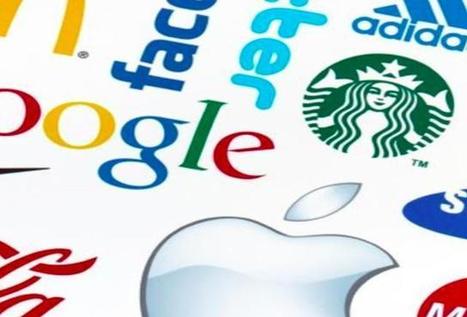

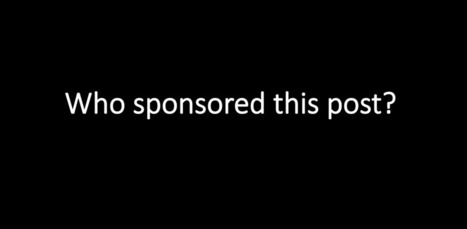


![How Much Should Sponsored Articles Really Cost? [New Data] | Public Relations & Social Marketing Insight | Scoop.it](https://img.scoop.it/Zv0AJvPs8jq3FccTeDc5tDl72eJkfbmt4t8yenImKBVvK0kTmF0xjctABnaLJIm9)




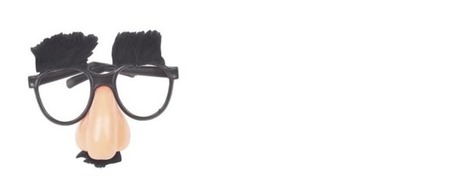



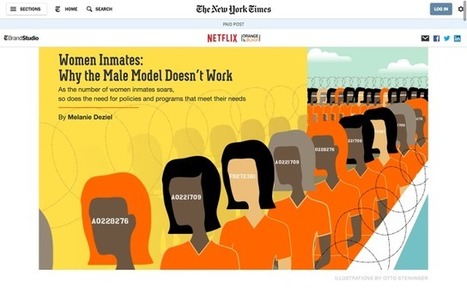
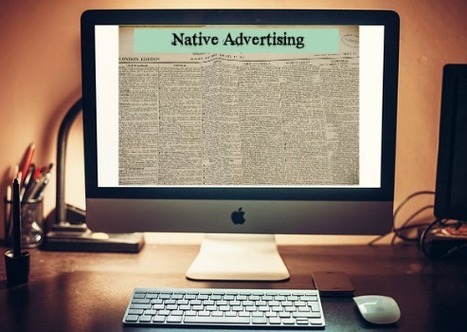



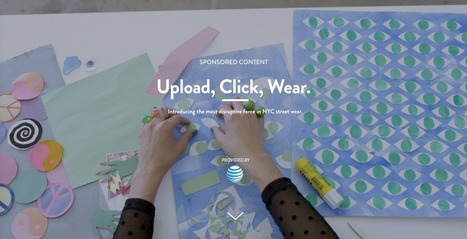














Spin is spin, even when it is written by journalists. Tamara Pearson takes a look at fake content marketing.